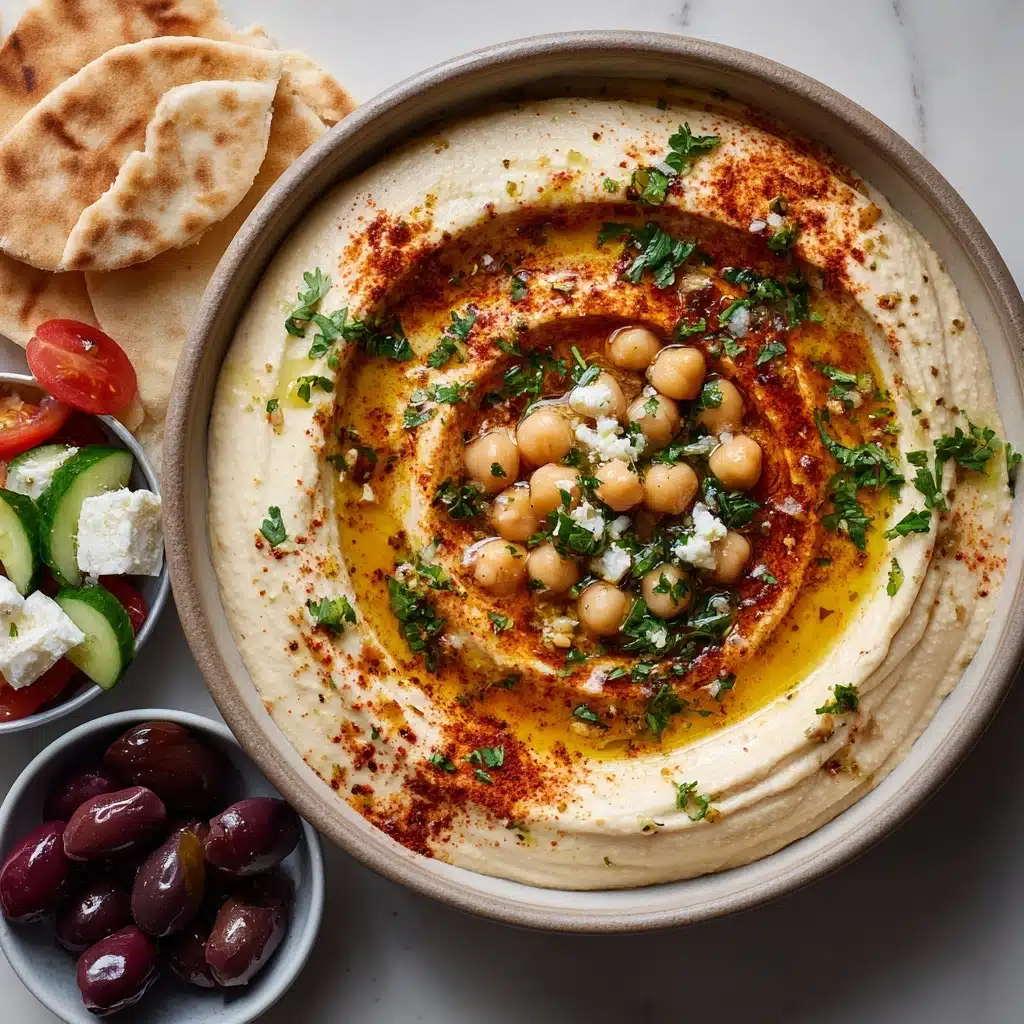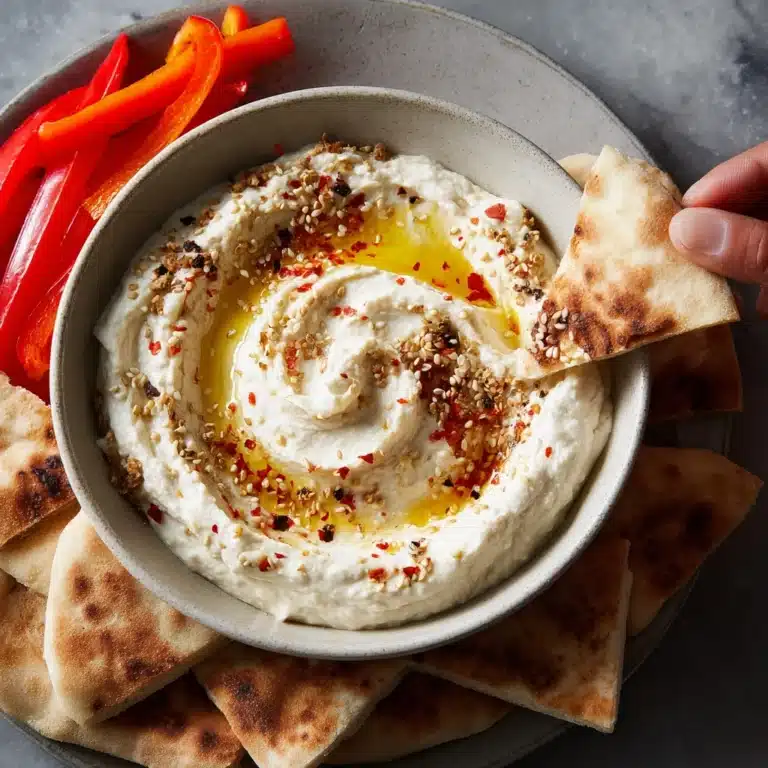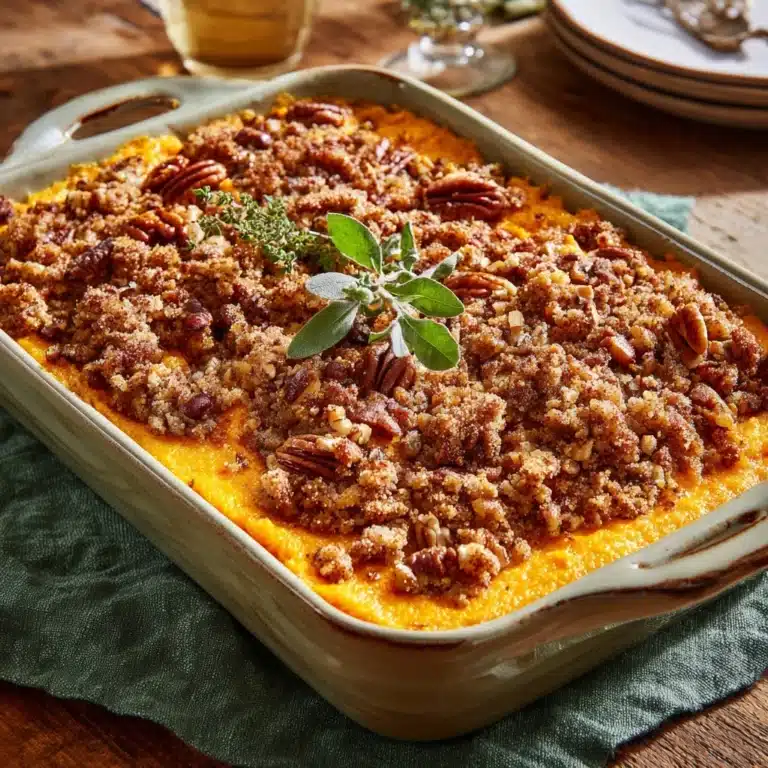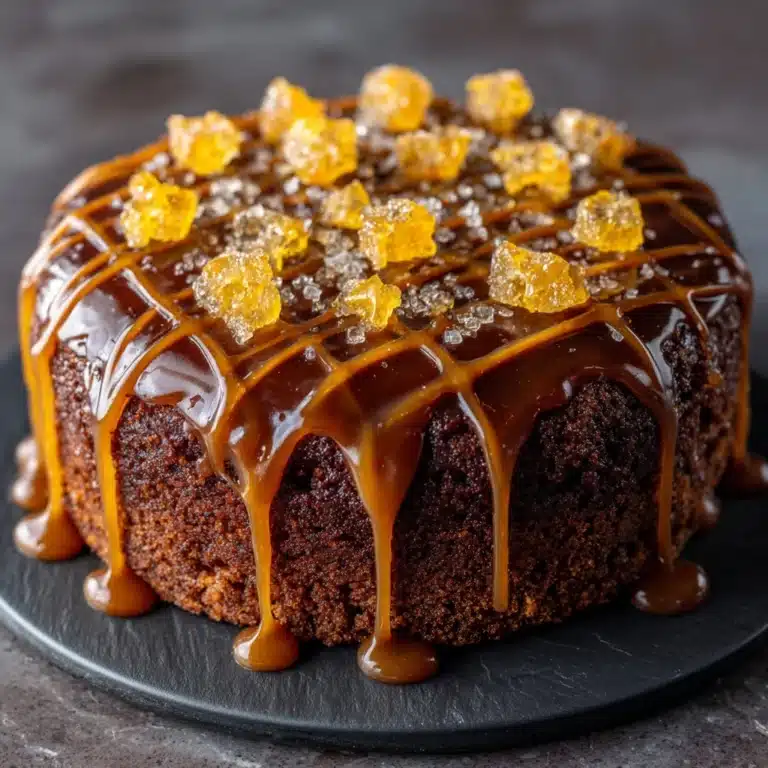If you’re a fan of creamy dips and crave a taste of the Middle East at your table, Hummus is your answer! This classic chickpea spread is smooth, luscious, and rich with nutty tahini and lemony brightness. Whether you scoop it up with warm pita or dress up your lunch bowl, Hummus is the ultimate crowd-pleaser that deserves a permanent spot in every kitchen.
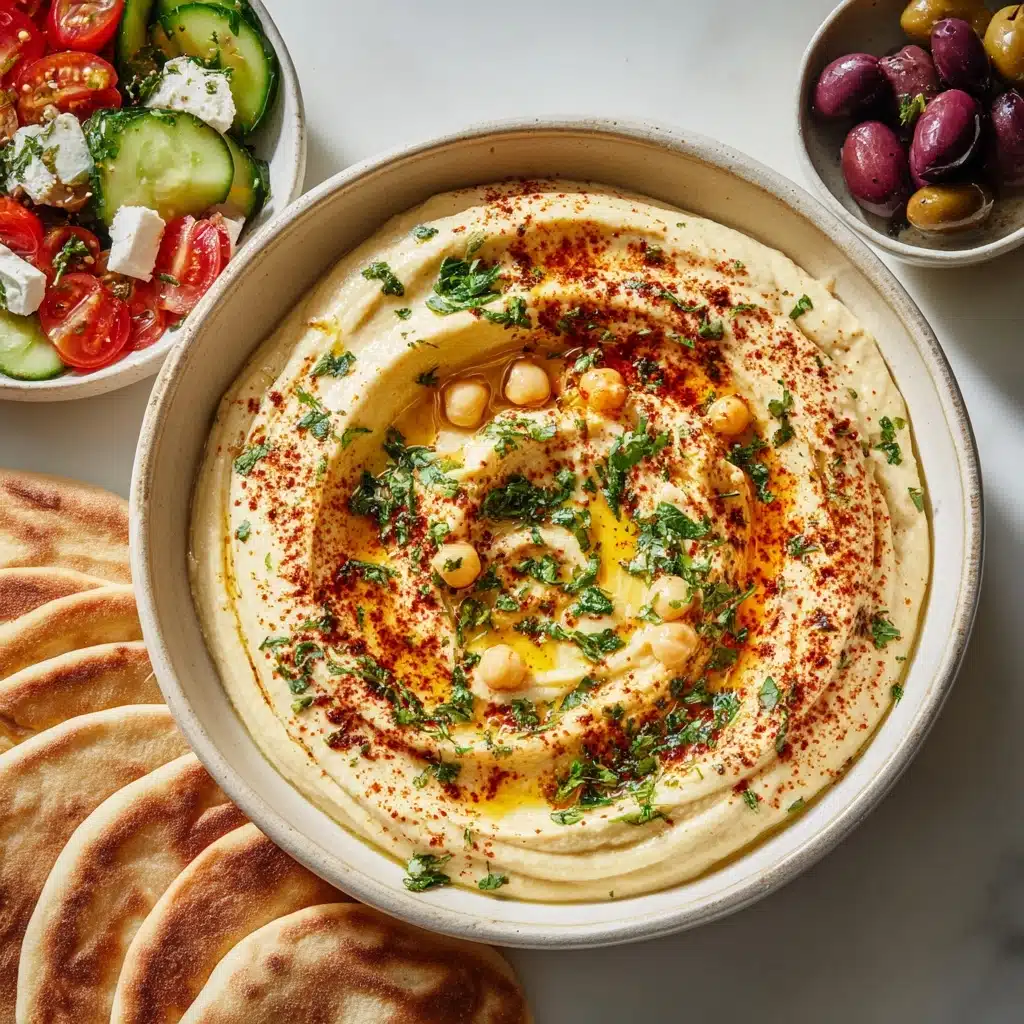
Ingredients You’ll Need
Making incredible Hummus at home is much easier than you might think. Each component adds its own layer of flavor, silkiness, or color, so don’t skip a thing—your tastebuds will thank you.
- Chickpeas: The heart of Hummus—soft, creamy, and full of plant-based protein. For the smoothest texture, you can peel them by gently pinching off the skins.
- Fresh Lemon Juice: Adds essential zing and balances out the richness from the tahini and olive oil.
- Tahini: This sesame paste brings unmistakable nutty depth and an ultra-creamy finish—well-stirred tahini mixes more easily and tastes better.
- Garlic: Just a small clove makes all the difference, adding that savory pop Hummus is famous for.
- Extra-Virgin Olive Oil: For silky richness and that classic Middle Eastern flavor, plus an extra drizzle to finish.
- Ground Cumin: A little bit goes a long way, rounding out the flavor with warm, earthy notes.
- Salt: Brings everything to life—don’t skimp!
- Cold Water: Helps whip the Hummus to your preferred texture, making it irresistibly light and soft.
- Paprika and Chopped Fresh Parsley: Optional, but these garnish essentials add color and a fresh herbal note.
How to Make Hummus
Step 1: Whip Tahini and Lemon Juice
Start by combining the tahini and fresh lemon juice in your food processor. Let it blend for a full minute—this is the trick for becoming ultra-smooth and creamy! The mixture will look quite thick but trust the process; it’s the secret to a fantastic Hummus base.
Step 2: Add Flavor Essentials
Next, toss in the minced garlic, extra-virgin olive oil, cumin, and salt. Blend again, just for 30 seconds, so everything melds together. You’ll notice the aroma already turning irresistible.
Step 3: Blend in the Chickpeas
Add the drained and rinsed chickpeas to your mixture. Process for about a minute; pause to scrape down the sides if needed. At this point, the Hummus will look thick—don’t worry, the next step will make it perfect.
Step 4: Adjust Texture
While the food processor runs, drizzle in two to three tablespoons of cold water until you reach your desired consistency. Smooth, fluffy Hummus is just seconds away! Be sure to taste and adjust the seasoning if you’d like a brighter or saltier flavor.
Step 5: Serve & Garnish
Transfer your freshly made Hummus to a serving bowl. Finish with a swirl of olive oil, a dusting of paprika, and some bright green parsley if you’re feeling fancy. Grab your favorite scoopers and dive in!
How to Serve Hummus
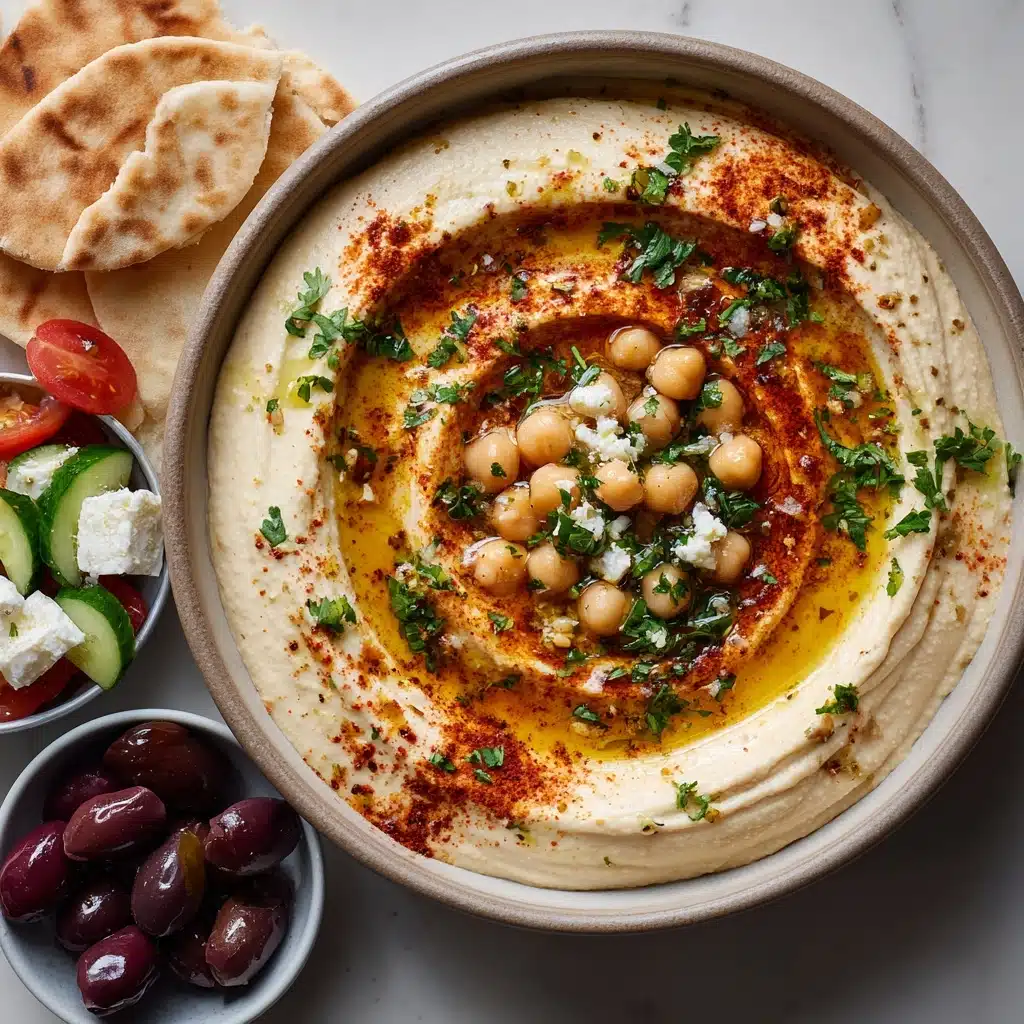
Garnishes
The classic finish for Hummus is a good drizzle of olive oil, a light sprinkle of smoky paprika, and a handful of chopped parsley. You can also top it with toasted pine nuts, za’atar, or even a few whole chickpeas for extra flair. These touches make Hummus look as good as it tastes.
Side Dishes
Hummus pairs famously with fluffy pita bread—whether warm or lightly toasted—for perfect bite after perfect bite. Try it as a dip with crisp vegetables like cucumber, carrot sticks, or radishes. Crackers, pretzels, and even potato chips are also delicious vessels for scooping up the creamy goodness.
Creative Ways to Present
Think beyond the dip! Spread Hummus in wraps, sandwiches, or pita pockets as a plant-based mayo alternative. Dollop it onto grain bowls, salads, or roasted veggie platters for an instant flavor boost. For parties, make layered Hummus platters topped with roasted peppers, olives, or chopped herbs—guaranteed to wow guests!
Make Ahead and Storage
Storing Leftovers
Homemade Hummus keeps beautifully in the fridge. Transfer any leftovers to an airtight container and refrigerate for up to five days. To keep it extra fresh, press a piece of plastic wrap against the surface before sealing to prevent a dry crust from forming.
Freezing
Freezing Hummus is a real timesaver for future snack cravings. Scoop leftovers into a freezer-safe container (leaving a little room for expansion), then freeze for up to three months. Thaw overnight in the fridge before serving, giving it a good stir and a splash of olive oil to revive it.
Reheating
Hummus is generally enjoyed cold or at room temperature, but if you prefer, gently warm it in the microwave at low power or over a double boiler until just warmed through. Stir well and drizzle with more olive oil before serving for best texture and flavor.
FAQs
Can I use dried chickpeas instead of canned?
Absolutely! If you have time, cooking dried chickpeas from scratch will give your Hummus an even richer flavor and creamier texture. Just soak the dried chickpeas overnight, simmer until soft, then proceed as directed.
Is tahini necessary for Hummus?
Tahini is traditional and gives Hummus its unmistakable nutty undertone, but if you’re out, sunflower seed butter or Greek yogurt can be used in a pinch. The result will taste a bit different, but still delicious!
How do I make my Hummus extra smooth?
For the silkiest Hummus ever, take a few minutes to peel the skins off the chickpeas before blending. It’s a little extra work, but the difference in texture is worth it if you’re after restaurant-level creaminess.
Is Hummus healthy?
Yes! Hummus packs plant protein, fiber, healthy fats, and plenty of vitamins, all in one dip. It’s perfect for vegan, gluten-free, and Mediterranean-style diets—but as always, portion size matters, especially with the olive oil!
Can I adjust the flavor?
Hummus is endlessly customizable. Amp up the garlic or lemon to taste, add smoked paprika or roasted red peppers for a twist, or stir in a pinch of cayenne if you love a little heat. Have fun and make it your own!
Final Thoughts
Homemade Hummus really is one of those magical dishes—so easy, so nourishing, and endlessly versatile. Give it a try and see just how quickly it becomes a staple snack, speedy lunch, or party favorite at your place!
Print
Hummus Recipe
- Total Time: 10 minutes
- Yield: 6 servings 1x
- Diet: Vegan, Gluten-Free
Description
Learn how to make delicious homemade hummus with this easy recipe. Creamy and flavorful, this classic Middle Eastern dip is perfect for snacking or as an appetizer.
Ingredients
Ingredients:
- 1 can (15 ounces) chickpeas, drained and rinsed
- 1/4 cup fresh lemon juice (about 1 large lemon)
- 1/4 cup well-stirred tahini
- 1 small garlic clove, minced
- 2 tablespoons extra-virgin olive oil, plus more for serving
- 1/2 teaspoon ground cumin
- 1/2 teaspoon salt
- 2 to 3 tablespoons cold water
- paprika and chopped fresh parsley for garnish (optional)
Instructions
- In a food processor, combine the tahini and lemon juice and process for 1 minute until smooth and creamy.
- Add the minced garlic, olive oil, cumin, and salt and process for another 30 seconds.
- Add the chickpeas and process for about 1 minute, scraping down the sides as needed, until thick and smooth.
- With the processor running, slowly add 2 to 3 tablespoons of cold water until the hummus reaches your desired consistency.
- Taste and adjust seasoning as needed.
- Transfer to a serving bowl, drizzle with extra olive oil, and sprinkle with paprika and chopped parsley if desired.
- Serve with pita bread, fresh vegetables, or crackers.
Notes
- For an ultra-smooth hummus, peel the skins off the chickpeas before blending.
- Store leftovers in an airtight container in the refrigerator for up to 5 days.
- Prep Time: 10 minutes
- Cook Time: 0 minutes
- Category: Appetizer
- Method: No-Cook
- Cuisine: Middle Eastern
Nutrition
- Serving Size: 1/4 cup
- Calories: 140
- Sugar: 1g
- Sodium: 220mg
- Fat: 8g
- Saturated Fat: 1g
- Unsaturated Fat: 7g
- Trans Fat: 0g
- Carbohydrates: 14g
- Fiber: 3g
- Protein: 5g
- Cholesterol: 0mg
